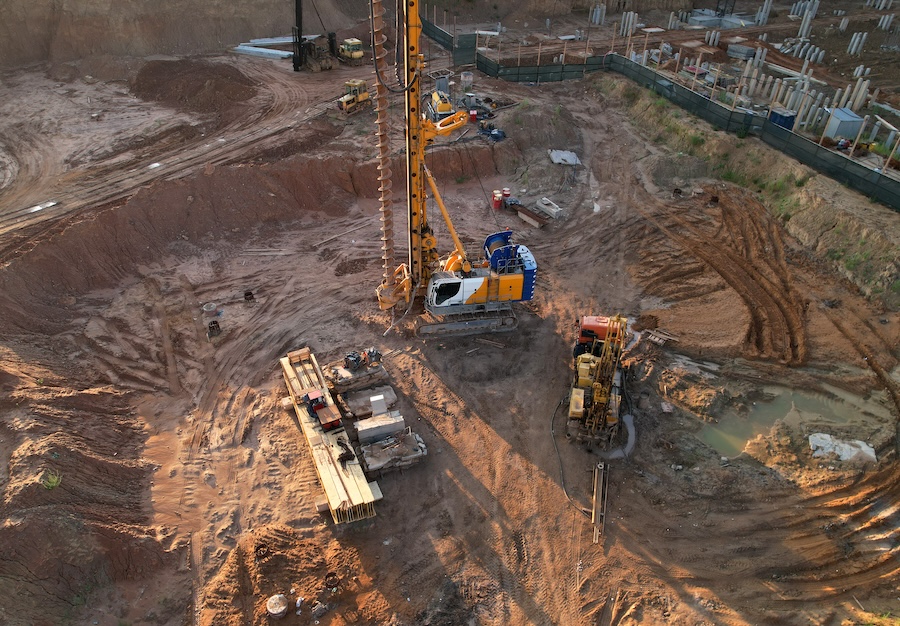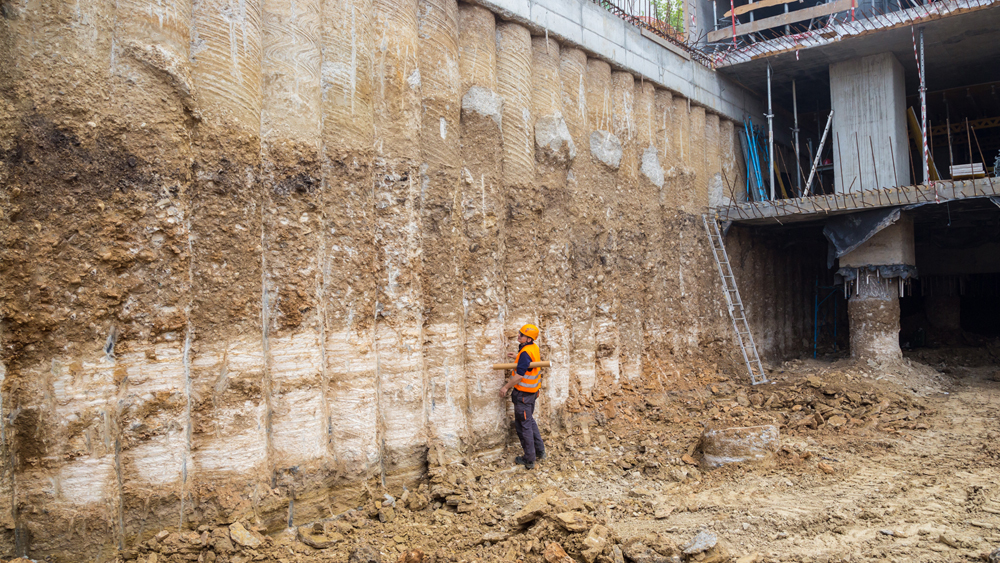The Interdisciplinary Approaches in the Geotechnical Industry: Linking the Void Between Engineering, Geology, and Environmental Science for Optimum Job Outcomes
The combination of design, geology, and ecological science within the geotechnical sector is not merely advantageous; it is critical for achieving ideal task end results. This interdisciplinary cooperation promotes a comprehensive understanding of complicated site conditions, enabling innovative options to arise. By examining crucial functions and successful instance researches, we can reveal the dynamic interaction that drives project success. Difficulties continue to be in properly managing these multidisciplinary initiatives, raising concerns about future patterns and potential innovations. What techniques might arise to facilitate this crucial cooperation and boost the efficacy of geotechnical practices?
Importance of Interdisciplinary Collaboration
The significance of interdisciplinary partnership in the geotechnical market can not be overemphasized. Efficient geotechnical tasks call for the assimilation of diverse knowledge from different fields, including design, geology, and ecological scientific research. This collaboration guarantees that all aspects of a job are taken into consideration, bring about thorough options that attend to intricate challenges.
Interdisciplinary cooperation cultivates development by enabling professionals to share insights and methods that might not be evident when functioning in isolation (engineer of record). By leveraging the staminas of multiple self-controls, teams can identify possible risks, maximize design processes, and enhance the sustainability of geotechnical projects. In addition, such cooperation promotes a holistic understanding of site-specific problems, which is crucial for accurate assessment and decision-making.
The intricacy of geotechnical tasks demands a collaborated approach to analytic. Inevitably, interdisciplinary collaboration is essential for advancing finest methods and accomplishing quality in the geotechnical market.
Trick Duties of Each Self-control
Partnership among various disciplines is not simply helpful; it is important for the successful execution of geotechnical tasks. Each self-control-- design, geology, and ecological scientific research-- plays an unique yet interconnected function that adds to forecast efficiency and sustainability.
Geotechnical designers are mainly in charge of creating structures and ensuring architectural honesty. They examine soil and rock properties to examine load-bearing capabilities, offering crucial information for risk-free building practices. Their competence enables the solution of innovative options to complex challenges.

Environmental scientists assess the potential effects of building and construction on ecological communities and water sources. They carry out environmental analyses and create reduction approaches to reduce unfavorable impacts. By incorporating ecological considerations, they make sure conformity with regulations and promote sustainability throughout the task lifecycle.
Situation Studies of Successful Integration
Effective assimilation of geotechnical techniques can be exhibited through various situation researches that highlight the effectiveness of synergy in attending to intricate design challenges. One noteworthy instance is the building of the Hong Kong-- Zhuhai-- Macau Bridge, where a collaborative technique including geotechnical design, geology, and ecological scientific research navigate here was essential. Rock hounds and designers operated in unison to assess the seabed problems and optimize the structure design, making sure stability and minimizing environmental effect.
One read the full info here more impactful situation is the improvement of incline security in the San Francisco Bay Location, where an interdisciplinary team combined geotechnical evaluation with environmental analyses. By integrating geological studies and hydrological research studies, the team efficiently identified potential landslide threats and executed effective mitigation measures, boosting safety and security and sustainability.
In addition, the redevelopment of Brownfield websites typically needs a multidisciplinary approach. In one case in Chicago, partnership amongst geotechnical engineers, environmental researchers, and metropolitan planners caused the effective remediation of infected soil, allowing for the secure transformation of the site into a community park. These study illustrate that interdisciplinary cooperation not just addresses technological difficulties but likewise promotes cutting-edge options that benefit both communities and tasks.
Difficulties in Multidisciplinary Projects

Additionally, coordinating schedules and workflows amongst numerous groups can be problematic, especially when each technique has special project milestones and deliverables. This misalignment can lead to delays and enhanced costs. The difficulty of resource allowance likewise looms huge; ensuring that specialized experience is readily available at important times calls for mindful planning and insight.
Finally, regulative compliance postures an additional substantial difficulty. Each self-control may encounter various regulatory structures, and straightening these requirements to satisfy job objectives can be lengthy and intricate. Addressing these difficulties requires solid leadership and reliable communication approaches to promote partnership and make sure that multidisciplinary groups work cohesively in the direction of shared goals.
Future Trends in Geotechnical Practices
As the geotechnical industry develops, arising patterns are browse around these guys reshaping methods to resolve the challenges encountered in multidisciplinary jobs - geotechnical engineers. One substantial fad is the raised combination of sophisticated technologies, such as expert system and artificial intelligence, right into geotechnical evaluation and style. These technologies improve predictive modeling and danger assessment, enabling engineers to make even more informed choices throughout the task lifecycle

Additionally, the fostering of digital doubles and real-time surveillance systems is becoming a lot more prevalent. These devices assist in recurring assessment of soil conditions and structural efficiency, enabling timely interventions when issues emerge.
Verdict
In conclusion, the integration of design, geology, and ecological scientific research is essential for attaining ideal results in the geotechnical industry. Interdisciplinary cooperation promotes advancement, improves problem-solving capacities, and lines up technical needs with ecological sustainability. Successful study illustrate the benefits of this strategy, while recognizing the difficulties faced in multidisciplinary projects. Looking in advance, embracing these collective techniques will certainly be vital for navigating future trends and advancing the field of geotechnical design.
The assimilation of engineering, geology, and ecological scientific research within the geotechnical sector is not simply advantageous; it is crucial for accomplishing optimal project end results. Effective geotechnical tasks require the assimilation of diverse know-how from numerous areas, consisting of design, geology, and environmental science.Navigating the complexities of multidisciplinary tasks in the geotechnical market provides numerous substantial challenges.As the geotechnical market progresses, arising fads are reshaping methods to attend to the difficulties faced in multidisciplinary jobs. Geotechnical engineers are progressively working together with environmental scientists to make certain that tasks straighten with sustainability goals and abide with regulatory needs.